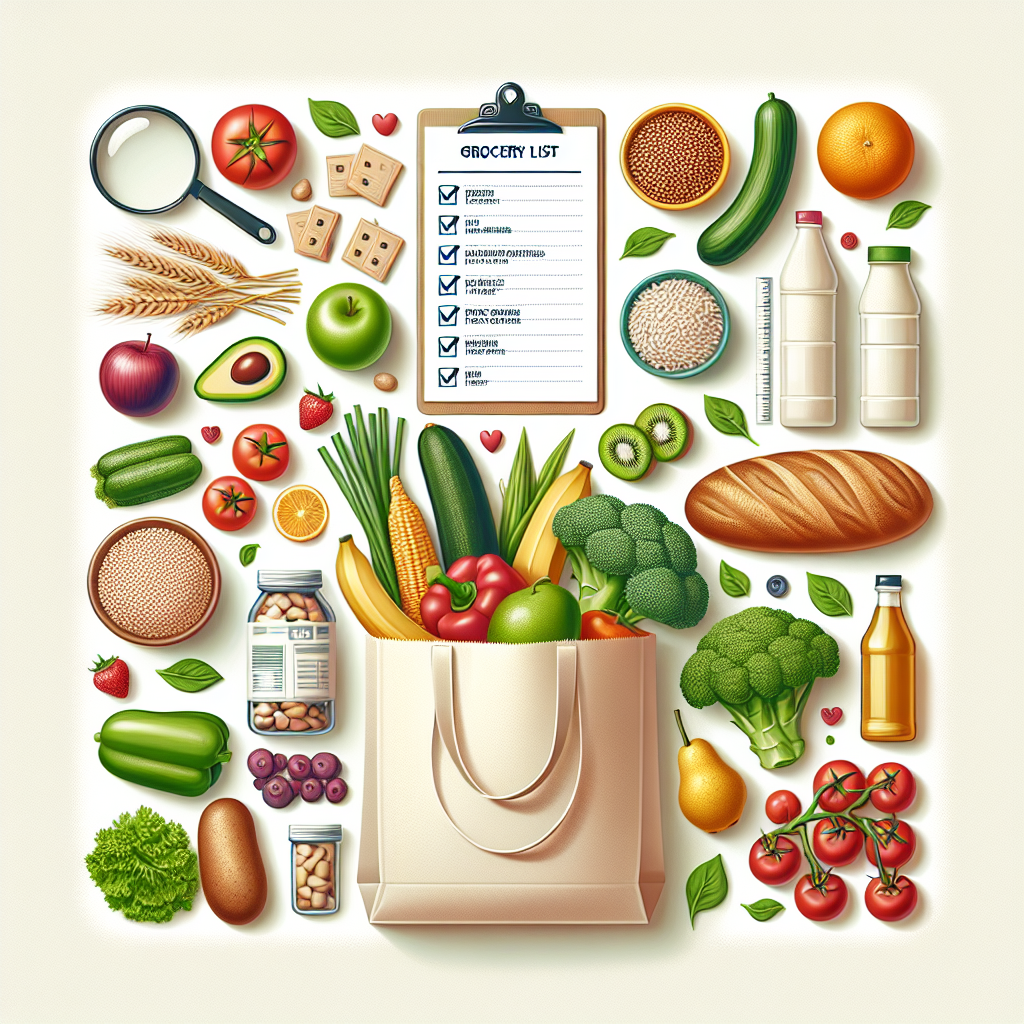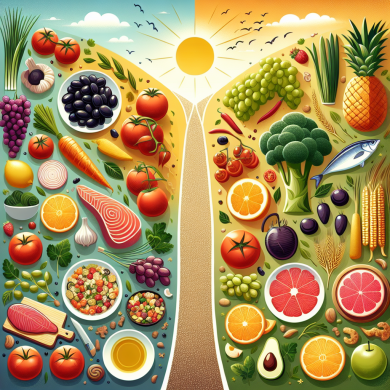Smart Grocery Shopping Tips for the DASH Diet
Introduction to the DASH Diet
The DASH (Dietary Approaches to Stop Hypertension) diet is a dietary pattern promoted by the National Heart, Lung, and Blood Institute to prevent and control hypertension. This diet emphasizes the consumption of fruits, vegetables, whole grains, lean proteins, and low-fat dairy while reducing the intake of sodium, red meats, and added sugars. It’s not just beneficial for blood pressure but also supports overall heart health and weight management.
Preparing for Your Grocery Trip
Make a List
Before heading to the store, prepare a detailed shopping list focused on DASH diet-approved foods. Categorize your list by sections of the store, such as produce, dairy, grains, and proteins, to streamline the shopping process and help avoid impulse buys.
Plan Your Meals
Plan your meals ahead of time for the week. This will help ensure you purchase only what you need and avoid unnecessary items. Having a meal plan helps you incorporate a variety of foods, ensuring nutritional balance and adherence to the DASH diet guidelines.
Check Your Pantry
Before shopping, take inventory of what you already have at home. This helps in avoiding duplicate purchases and keeps your grocery bill within budget. Utilize ingredients you already have to plan meals, which can also inspire creativity in your cooking.
Shopping the Perimeter
Emphasize Fresh Produce
The DASH diet encourages high consumption of fruits and vegetables. Spend most of your time in the produce section, selecting a rainbow of colors to maximize nutrient intake. Look for seasonal produce for better prices and freshness. Remember, frozen fruits and vegetables are also excellent options, offering similar nutritional benefits and a longer shelf life.
Choose Whole Grains
When shopping for grains, opt for whole grain options like brown rice, quinoa, and whole wheat bread and pasta. Check labels to ensure ‘whole grain’ is among the first ingredients listed, and be cautious of products labeled as ‘multi-grain’ that may not necessarily be whole grain.
Select Lean Proteins
Focus on lean protein sources, such as skinless poultry, fish, beans, nuts, and seeds. Fish, particularly fatty fish like salmon and mackerel, provides heart-healthy omega-3 fatty acids. Plant-based proteins like beans and lentils are excellent for both vegetarians and meat-eaters looking to reduce saturated fat intake.
Understanding Food Labels
Watch for Sodium Content
One of the DASH diet’s main focuses is reducing sodium intake. Become adept at reading labels to check for sodium content. Look for low-sodium versions of canned goods and sauces, and aim for items with less than 5% of the daily value per serving.
Identify Added Sugars
Added sugars can sneak into many processed foods. Check labels for ingredients such as high fructose corn syrup, cane sugar, or any words ending in ‘-ose.’ Choose products with the least amount of added sugars, especially in items like yogurt, cereals, and sauces.
Evaluate Fats
The DASH diet encourages the intake of healthy fats. Look for products that contain monounsaturated and polyunsaturated fats instead of saturated and trans fats. Foods like olive oil, avocados, and nuts are excellent sources of healthy fats.
Budget-Friendly Tips
Buy in Bulk
Purchasing items like whole grains, beans, and nuts in bulk can be more cost-effective. These items have a longer shelf life and can be stored easily, making them a smart choice for those following the DASH diet on a budget.
Look for Deals and Discounts
Keep an eye out for promotions, discounts, and coupons, especially for staples like fresh produce, dairy, and lean proteins. Many stores have loyalty programs or apps that can lead to additional savings.
Consider Store Brands
Store-brand products often provide the same quality as name brands but at a lower cost. This can be particularly useful for pantry staples like canned beans, whole grains, and dairy products.
Conclusion
Grocery shopping on the DASH diet doesn’t have to be daunting. With proper planning, label reading, and mindful purchasing, you can make heart-healthy choices that align with the DASH diet’s principles. By focusing on whole, nutrient-rich foods and being savvy about spending, you can not only support your health goals but also maintain a balanced budget.















Add comment